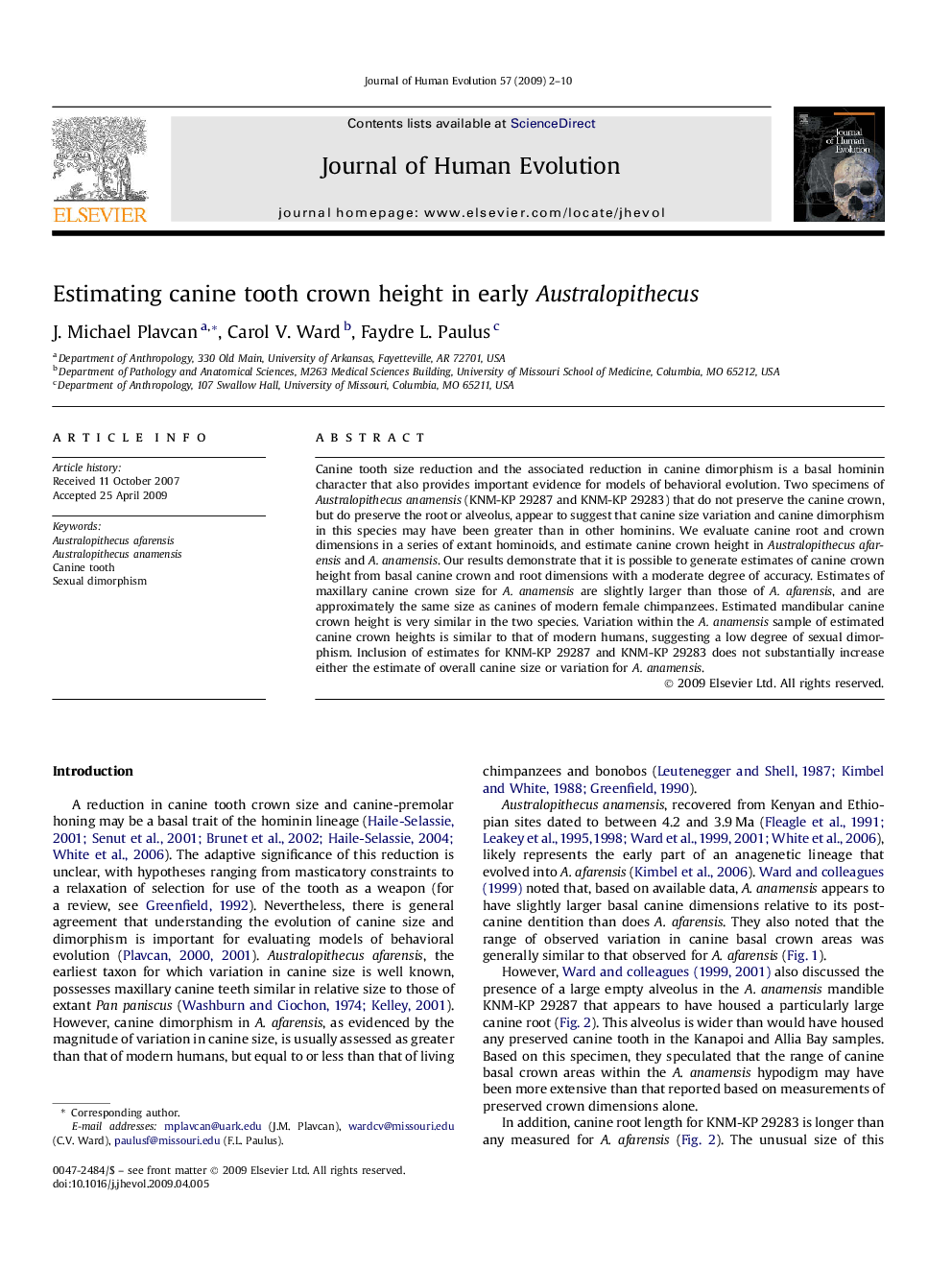| Article ID | Journal | Published Year | Pages | File Type |
|---|---|---|---|---|
| 4557095 | Journal of Human Evolution | 2009 | 9 Pages |
Canine tooth size reduction and the associated reduction in canine dimorphism is a basal hominin character that also provides important evidence for models of behavioral evolution. Two specimens of Australopithecus anamensis (KNM-KP 29287 and KNM-KP 29283) that do not preserve the canine crown, but do preserve the root or alveolus, appear to suggest that canine size variation and canine dimorphism in this species may have been greater than in other hominins. We evaluate canine root and crown dimensions in a series of extant hominoids, and estimate canine crown height in Australopithecus afarensis and A. anamensis. Our results demonstrate that it is possible to generate estimates of canine crown height from basal canine crown and root dimensions with a moderate degree of accuracy. Estimates of maxillary canine crown size for A. anamensis are slightly larger than those of A. afarensis, and are approximately the same size as canines of modern female chimpanzees. Estimated mandibular canine crown height is very similar in the two species. Variation within the A. anamensis sample of estimated canine crown heights is similar to that of modern humans, suggesting a low degree of sexual dimorphism. Inclusion of estimates for KNM-KP 29287 and KNM-KP 29283 does not substantially increase either the estimate of overall canine size or variation for A. anamensis.
